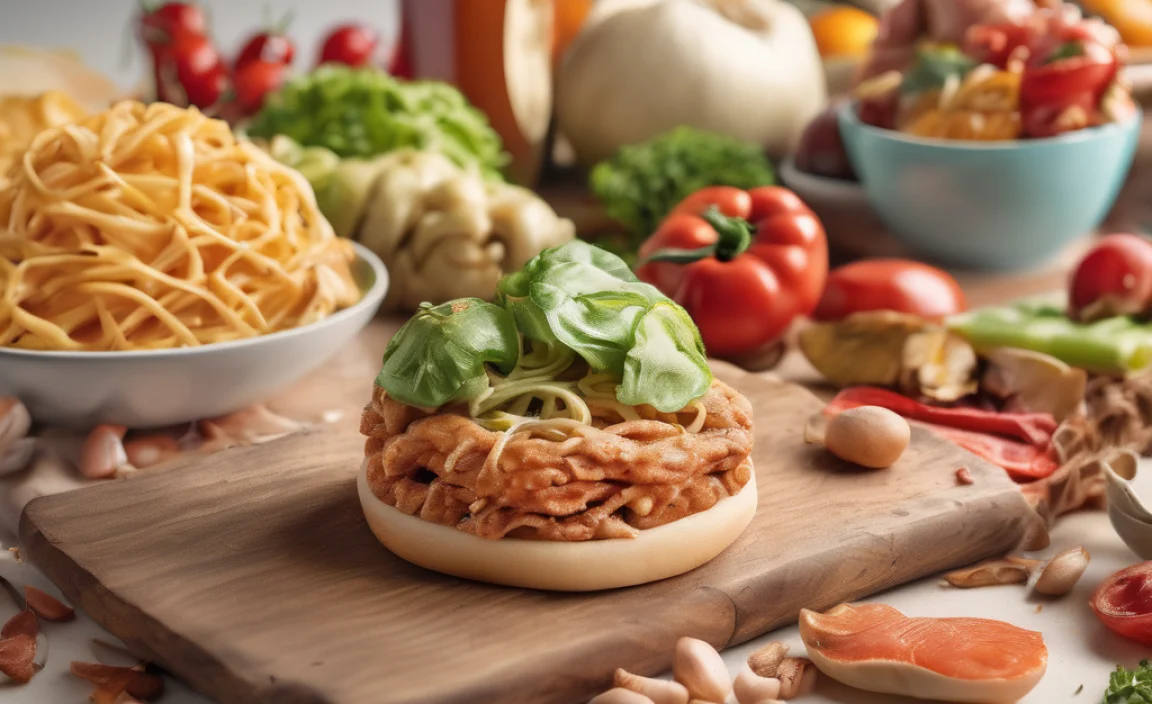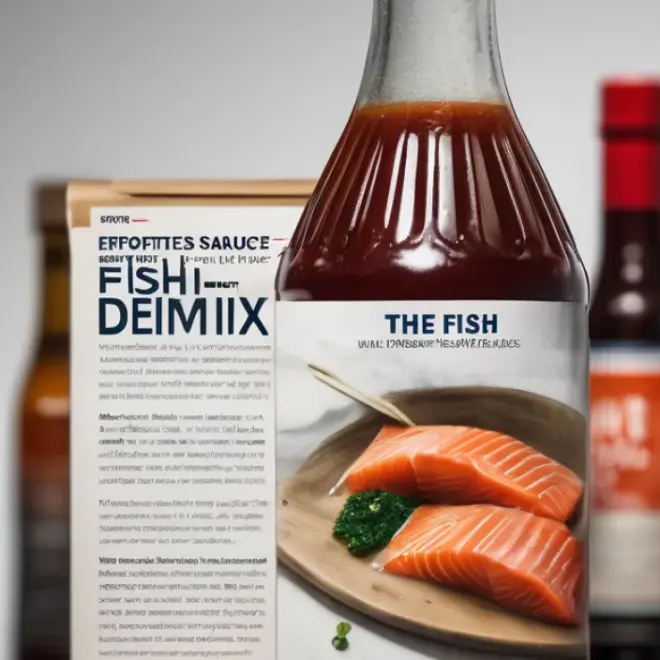Have you ever wondered what people eat in other countries? There are some foods that might seem strange to us. Around the world, people enjoy weird food facts that can surprise us! Let’s take a trip to discover some of these odd eats. Are you ready for a fun food adventure?
Key Takeaways
- Weird foods are eaten in many countries worldwide.
- Some foods might be strange, but they are tasty locally.
- Each food has its own unique story and tradition.
- Trying new foods can be an exciting adventure.
- Discover weird food facts around the world every day.
Weird Food Facts: Asia’s Strange Eats

Asia is a vast continent with many unique foods. Some of these foods might surprise you. In Japan, there’s a dish called “natto.” It’s made from fermented soybeans. Many people find its sticky texture unusual. In the Philippines, people eat “balut,” a duck egg with a developing embryo inside. In Korea, some enjoy eating live octopus. It’s called “sannakji,” and it can be a real challenge.
- Natto is a sticky soybean dish.
- Balut is enjoyed in the Philippines.
- Sannakji is live octopus from Korea.
- These dishes are part of local culture.
- Many people love these flavors.
These foods might seem strange, but they are popular in their countries. People have eaten them for many years. They are part of traditions and celebrations. Sometimes, trying new foods is an adventure. You might not like them all, but it’s fun to explore and learn. Who knows, you might find a new favorite dish!
Fun Fact: The stickiness of natto is due to a special bacteria used in its fermentation process.
Why Do People Eat Balut?
Have you ever wondered why people eat balut? In the Philippines, it’s a popular street food. People say it has a rich and savory taste. Eating balut is a tradition. It’s often eaten with a pinch of salt. Some people even drink the broth inside the egg. It’s said to be very nutritious. Despite its looks, many people enjoy it. Trying balut can be a fun challenge for tourists and locals alike.
How Is Sannakji Prepared?
Do you want to know how sannakji is prepared? This dish involves cutting a live octopus into pieces. The pieces are served with sesame oil. Some people find eating sannakji a bit daring. The octopus pieces continue moving on the plate. Many enjoy the chewy texture and fresh taste. Eating it is a unique experience. If you’re brave enough to try, it’s an exciting culinary adventure.
Natto: A Sticky Delight
What makes natto so sticky? Natto’s stickiness comes from the bacteria used in fermentation. It’s a breakfast favorite in Japan. Some people add soy sauce or mustard for extra flavor. Natto is known for its strong smell and unique taste. Not everyone likes it, but those who do love it. It’s said to be very healthy. If you visit Japan, trying natto is a must!
Weird Food Facts: European Oddities

Europe also has its fair share of strange foods. Have you heard of “haggis”? It’s a traditional Scottish dish. Haggis is made from sheep’s heart, liver, and lungs. In Sardinia, they have “casu marzu,” a cheese with live maggots inside. In Iceland, people eat “hákarl,” which is fermented shark meat. These dishes may sound strange, but people in Europe enjoy them.
- Haggis is from Scotland.
- Casu marzu is a Sardinian cheese.
- Hákarl is fermented shark from Iceland.
- These foods have long histories.
- They are part of local traditions.
These foods might not be for everyone. However, they hold a special place in each country’s culture. People have been eating them for generations. Trying these foods can be a great way to learn about a place. Behind each dish, there’s a story or tradition. Who knows, you might even find them delicious!
Fun Fact: Casu marzu is considered a delicacy in Sardinia and is illegal in some countries.
What Is Hákarl?
Ever wondered what hákarl is? Hákarl is a traditional Icelandic dish. It’s made from fermented shark meat. The shark’s meat is buried in the ground to ferment. After a few months, it’s hung to dry. The result is a very strong-smelling food. It’s often served in small cubes. Locals say the taste is unique. Some describe it as an acquired taste. If you’re in Iceland, trying hákarl is a true test of bravery.
Haggis: A Scottish Tradition
What makes haggis a Scottish favorite? Haggis is as much a part of Scotland as bagpipes. It’s made from sheep’s organs mixed with spices and grains. Traditionally, it’s cooked in the sheep’s stomach. Today, artificial casings are often used. Haggis is served with “neeps and tatties” (turnips and potatoes). It’s usually eaten during Burns Night celebrations. For Scots, it’s more than food; it’s a part of their heritage.
Casu Marzu: Sardinia’s Forbidden Cheese
Why is casu marzu known as forbidden cheese? In Sardinia, casu marzu is a famous cheese. It’s made by allowing maggots to grow in the cheese. This process gives it a soft texture. The cheese is illegal in many places due to health concerns. However, in Sardinia, it’s a special treat. People eat it with bread and enjoy its unique flavor. Trying casu marzu is not for the faint-hearted, but it’s an unforgettable experience.
Weird Food Facts: African Surprises

Africa is a land of diverse cultures and foods. Have you heard of “mopane worms”? These caterpillars are a delicacy in southern Africa. In Egypt, people enjoy “feseekh,” fermented fish with a strong smell. In Ghana, “banku” is a popular dish made from fermented corn and cassava. These foods may seem unusual, but they are loved by many.
- Mopane worms are a southern African delicacy.
- Feseekh is a traditional Egyptian fish dish.
- Banku is common in Ghana.
- These foods have unique flavors.
- They are part of everyday life.
These dishes are more than just food. They are a glimpse into African culture and daily life. Each dish tells a story of the land and its people. Trying these foods is an adventure for the senses. It’s a chance to learn about new traditions. You might discover a new taste that you love!
Fun Fact: Mopane worms are high in protein and often harvested during the rainy season.
How Are Mopane Worms Prepared?
Ever wondered how mopane worms are prepared? Mopane worms are collected from trees. They are often dried or smoked. This preserves them for longer periods. They can be cooked with vegetables or spices. Some people enjoy them fried. They have a crunchy texture and are very nutritious. For many, mopane worms are a tasty snack. If you visit southern Africa, give them a try!
What Is Feseekh?
Curious about feseekh? Feseekh is a traditional Egyptian dish. It’s made from fermented fish. The fish is salted and left to ferment. This process gives it a strong smell. Feseekh is often eaten during the Sham El-Nessim festival. It’s served with bread and vegetables. People love its unique taste. Eating feseekh is a part of Egyptian tradition. If you like bold flavors, feseekh might surprise you.
Discovering Banku in Ghana
What is banku? Banku is a staple food in Ghana. It’s made from a mix of fermented corn and cassava dough. The mixture is cooked and stirred until smooth. Banku is often eaten with soups or stews. It’s a filling and nutritious meal. Many Ghanaians eat banku every day. Trying banku is a way to experience Ghanaian culture. It’s a delicious dish that brings people together.
Weird Food Facts: America’s Peculiar Plates

America is known for its variety of foods. But did you know about some of its strange ones? In Alaska, people eat “muktuk,” whale skin with blubber. In the South, “fried alligator” is a popular dish. In New England, some enjoy “fried clams” with their shells on. These foods might seem odd, but they have a special place in American cuisine.
- Muktuk is a traditional Alaskan dish.
- Fried alligator is common in the South.
- Fried clams are a New England favorite.
- These dishes have unique tastes.
- They reflect America’s diverse food culture.
American food is full of surprises. Some dishes might seem strange at first. But they are part of local traditions and history. People enjoy them for their unique flavors. Trying these foods can be an exciting journey. It’s a chance to taste America’s culinary diversity. You might even discover a new favorite!
Fun Fact: Muktuk is rich in vitamin C and used traditionally by indigenous people.
What Is Muktuk?
Have you heard of muktuk? Muktuk is a traditional Alaskan dish. It’s made from whale skin with a layer of blubber. People often eat it raw or pickled. It has a chewy texture and a unique taste. Muktuk is a source of essential nutrients. For many native Alaskans, it’s an important part of their diet. If you visit Alaska, trying muktuk is a unique experience.
Fried Alligator: A Southern Delight
Ever tried fried alligator? This dish is popular in the southern United States. Alligator meat is tender and slightly fishy. It’s often breaded and deep-fried. People say it tastes like chicken. Fried alligator is served with sauces for extra flavor. It’s a treat for adventurous eaters. If you visit the South, don’t miss the chance to try it!
Fried Clams: A New England Treat
What makes fried clams special? In New England, fried clams are a beloved dish. They are often served with their shells. This gives them a crunchy texture. Fried clams are usually dipped in batter and deep-fried. They are a popular snack at fairs and festivals. Many people enjoy their salty taste. Trying fried clams is a must if you’re in New England.
Weird Food Facts: Australian Curiosities

Australia is home to some interesting foods. Have you heard of “Vegemite”? It’s a salty spread made from yeast extract. Australians love it on toast. In the Outback, people eat “witchetty grubs,” which are moth larvae. In some areas, “kangaroo meat” is a common dish. These foods might sound strange, but they are part of Australian life.
- Vegemite is a popular Australian spread.
- Witchetty grubs are eaten in the Outback.
- Kangaroo meat is available in some restaurants.
- These foods have unique flavors.
- They are part of local culture.
Australian foods are as diverse as the land itself. Each dish offers a taste of the country’s culture. People in Australia enjoy these foods for their flavors. Trying them is a way to explore Australia. It’s a chance to taste something different. Whether you love or dislike them, they are worth trying!
Fun Fact: Vegemite is rich in B vitamins and considered healthy by many Australians.
What Is Vegemite?
Have you heard of Vegemite? It’s a famous Australian spread. Made from brewer’s yeast extract, it’s very salty. Australians usually spread it thinly on toast or crackers. It can be an acquired taste for some. People love its unique flavor. Vegemite is part of Australian breakfast culture. If you visit Australia, it’s a must-try!
Exploring Witchetty Grubs
Curious about witchetty grubs? These are the larvae of moths. People in the Australian Outback eat them. They can be eaten raw or cooked. Witchetty grubs are said to taste like almonds. They are high in protein. For some, it’s a bushfood delicacy. Trying witchetty grubs is an adventurous eating experience. Would you dare to try one?
Kangaroo Meat: A Local Favorite
What about kangaroo meat? In Australia, kangaroo meat is common. It’s lean and high in protein. Some people say it tastes like beef. Kangaroo meat is often grilled or roasted. It’s considered a sustainable food source. Australians enjoy it as part of their diet. If you visit Australia, trying kangaroo meat is a must for meat lovers.
Conclusion
Exploring weird food facts around the world is a fun adventure. Each dish tells a story. They might seem strange, but they are loved locally. Trying them can be an exciting way to learn. Next time you travel, be brave and taste something new. You might just discover your next favorite food!
FAQs
Question: What are some weird food facts around the world?
Answer: Many countries have foods that might seem odd to others. For example, Japan has natto, a sticky soybean dish. In the Philippines, balut, a duck egg with a developing embryo, is popular. These foods are part of their culture and are enjoyed by many.
Question: Why do people eat weird foods?
Answer: People eat weird foods because they are part of cultural traditions. These foods have been eaten for generations. They often have unique flavors that locals love. Trying them can be a fun way to experience a new culture.
Question: Are weird foods safe to eat?
Answer: Yes, weird foods are generally safe to eat. They are prepared in a way that is safe for consumption. However, it’s always best to try them from a reliable source. Some foods might be an acquired taste, but they are enjoyed by locals.
Question: Which countries have the weirdest foods?
Answer: Many countries have foods that might seem weird to others. Asia, Europe, and Africa all have unique dishes. Each country has its own special foods. These foods have rich histories and cultural significance.
Question: What is the most unusual food you can try?
Answer: There are many unusual foods to try. For some, live octopus in Korea is very unusual. Others might find balut from the Philippines strange. Each unusual food offers a new taste experience. It’s fun to try them and see what you think!
Question: How can I learn more about weird food facts around the world?
Answer: You can learn about weird food facts by exploring different cultures. Try visiting food markets or reading about international cuisines. Watching travel shows can also give you insights. The more you explore, the more interesting foods you will discover.











